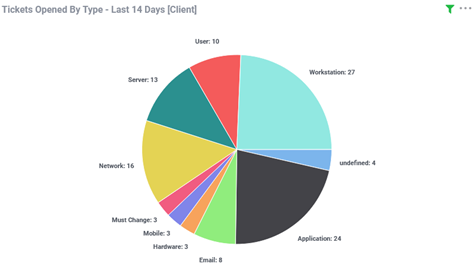What to Expect from an MSP Quarterly Business Review Report
Central to the relationship between an organization and its Managed IT Service Provider (MSP) is the Quarterly Business Review (QBR) report. While not all MSPs perform QBRs for their clients, those that do elevate their service beyond that of a break / fix type relationship.
A QBR allows for further integration of an MSP into their client’s organization to assist in making the best decisions to fully utilize technology to meet the organization’s goals.
This document serves as a vital tool for assessing the effectiveness of IT services, identifying areas for improvement and aligning technology strategies with business objectives. In this blog post, we delve into the essential components you should expect to find in your MSP’s QBR report.
7 Must Haves in an Effective QBR Report

- Support Request Metrics: Detailed metrics related to support requests are fundamental to the QBR report. What is most useful are those metrics which identify the employees who submit the majority of requests, the type of request most often received organization-wide and total number of open requests at given points throughout the previous quarter. These metrics help to identify systems or processes which may be causing recurring issues and guides discussion on resolving those root causes.
- Security Posture Assessment: Given the increasing prevalence of cyber threats, assessing the security posture of an organization is paramount. The QBR report should outline any security incidents or breaches encountered during the quarter, as well as the effectiveness of existing security measures. Additionally, it may include recommendations for enhancing cybersecurity defenses.
- Infrastructure Health and Capacity Planning: A comprehensive overview of the organization’s IT infrastructure is crucial for strategic planning. The QBR report should include assessments of hardware and software components, highlighting any areas of concern such as aging equipment or impending capacity constraints. Recommendations for upgrades or optimizations may also be provided.
- Technology Roadmap Alignment: An effective MSP acts as a strategic partner, aligning technology initiatives with business objectives. The QBR report should discuss progress towards predefined goals and milestones outlined in the technology roadmap. It may also propose new initiatives or projects aimed at driving innovation and competitiveness. Provided roadmaps can allow for proper budgeting of future initiatives.
- User Satisfaction and Feedback: User experience is a critical aspect of IT service delivery. Feedback from end-users regarding the performance and usability of IT systems should be captured in the QBR report. This information can help identify pain points and areas where additional training or support may be needed.
- Compliance and Regulatory Updates: For organizations operating in regulated industries, compliance with relevant standards and regulations is non-negotiable. The QBR report should include updates on compliance efforts, any regulatory changes impacting IT operations and actions taken to ensure adherence to compliance requirements.
- Risk Management and Disaster Recovery: Mitigating risks and preparing for potential disruptions is a core responsibility of the MSP. The QBR report should outline the organization’s risk profile, including vulnerabilities and threats, as well as strategies for disaster recovery and business continuity.

The Quarterly Business Review report serves as a vital tool for assessing the performance, security and strategic alignment of IT services provided by Managed IT Service Providers. By allowing an MSP to involve themselves in their client’s organizations by use of QBRs allows for a more productive and insightful vendor relationship.